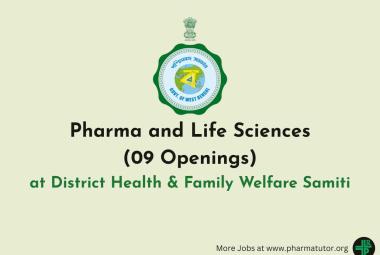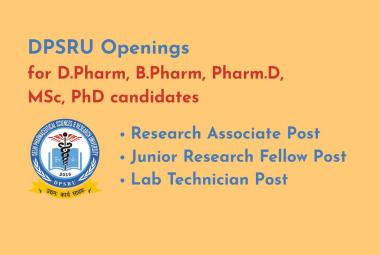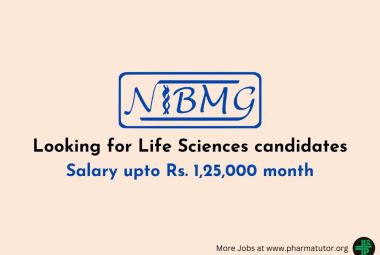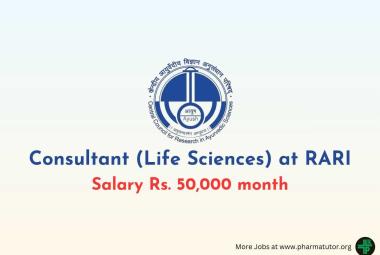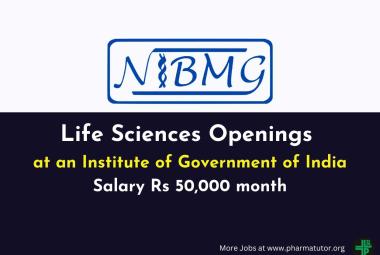{ DOWNLOAD AS PDF }
ABOUT AUTHORS:
Swati R. Dhande, Aruhana R. Patil*, Lilasrao J. Kadam
Bharati Vidyapeeth's College of Pharmacy,
Belapur, Navi Mumbai
*arpatil1991@gmail.com
ABSTRACT
Diabetes Mellitus (DM) is a metabolic endocrine disorder. It is one of the most rapidly growing diseases worldwide. Various pharmacotherapies have been practiced in the cure and management of DM. The existing conventional therapies aims at reducing hyperglycemia and achieving better glycemic control over the time, but fail to combat the other risk factors associated with the disease. The newer approaches are targeting to combat the risk factors and reduce the progression of disease. The newer approaches includes regenerational therapies, use of herbal and natural supplements, use of antioxidants and use combinations of conventional therapies with above mentioned therapies. Though these combinations have been found to be promising in the management of DM, the risk of pharmacological interactions cannot be overlooked. The present study was conducted to evaluate the pharmacokinetic interaction between DPP-IV inhibitor sitagliptin and a nutraceutical Z. officinale. STZ (Streptozotocin) and HFD (High Fat Diet) induced Type II DM rat model was used and the possible interaction was determined. The evaluation was done on validated HPTLC bioanalytical method. The present combination of sitagliptin and ginger did not affect the pharmacokinetic profile of sitagliptin.
[adsense:336x280:8701650588]
REFERENCE ID: PHARMATUTOR-ART-2378
|
PharmaTutor (Print-ISSN: 2394 - 6679; e-ISSN: 2347 - 7881) Volume 3, Issue 12 How to cite this article: SR Dhande, AR Patil, LJ Kadam; Study of Effect of supplementation of Zingiber Officinale on pharmacokinetic profile of Sitagliptin phosphate on Streptozotocin induced type II DM Rat Model; PharmaTutor; 2015; 3(12); 40-45 |
Diabetes Mellitus (DM) is a metabolic endocrine disorder. It is one of the most rapidly growing diseases worldwide. Estimated number of people suffering from DM across the globe is around 285 million, and it is estimated to rise around 439 million by 2030.Two major forms of this disease have been recognised as Type I DM and Type II DM. Both the forms of this epidemic are affecting millions of people worldwide. Type I DM is accounting for 5-10% and Type II DM accounting for 90-95% of all diabetic cases across the globe.[1]Numerous susceptibility factors have been identified for continuing of diabetes epidemic include genetic, environmental, lifestyle, ageing and obesity. The significant loss of β-cell mass (more than 50%) over time is a common feature in Type I DM and Type II DM, and is causally related to hyperglycemia. Progressive loss of β-cells has become a key challenge in the management of DM due to gradual deterioration of glycemic control.[2,3]
Existing therapies available aims at reducing hyperglycaemia and gaining satisfactory glycaemic control. Though it is important that glycaemic control should be achieved as rapidly and effectively as possible to minimize the impact of glucose toxicity, it is also necessary to provide therapy to control other related risk factors, including oxidative stress, dyslipidaemia, mitochondrial dysfunction, vascular complications.[4]Hence, a combination therapy becomes necessary to combat the multiple risk factors in diabetics. Various combinations of conventional antidiabetics have been employed and studied for their effectiveness, but the occurrences of side effects related to their long term consumption has become a concern continuing these therapies in cure of DM.[5]Hence various alternative approaches have been practiced which includes use of herbal and other integrative therapies apart from synthetic antidiabetic agents in the cure of DM.[6]The use of this complementary therapies gaining attention since they prove to manage diabetes related complications more effectively when consumed with conventional therapies.[7]
The herbal remedies have been consumed with or without consulting a physician became a major concern of pharmacological interactions way back.[8]But since the pharmacological interactions have been studied and continue to emerge as new research domain, their safety concerns are been evaluated. Thus the phytochemical approach becomes popular since frequency and potency of causing side effects with the phytochemicals is uncertain and low.[7,9]
In this study, the pharmacokinetic interactions of sitagliptin phosphate and Z. officinale have been studied. Since, understanding and employing pharmacokinetic principles can increase the probability of therapeutic success and reduce the occurrence of adverse drug effects in the body.[10]
Sitagliptin chemically known as [(2R)-4-oxo-4-[3-(trifluoromethyl)-5,6-dihydro[1,2,4]triazolo[4,3-a]pyrazin-7(8H)-yl]-1-(2,4,5-trifluorophenyl)butan-2-amine]is a potent, selective and reversible dipeptidyl peptidase-IV inhibitor(DPP-IV). DPP-IV inhibitors represent a novel class of antihyperglycaemics for the treatment of Type II DM.[11]Sitagliptin phosphate decreases the breakdown of glucagon like peptide-1 (GLP-1) and glucose dependent insulinotropic peptide (GIP) by inhibiting DPP-IV enzyme.[12]
Zingiber officinalecommonly known as ginger, a popular culinary spice has been used for its medicinal properties form centuries. The plant has been popularly used in various medicinal systems including Ayurveda, Chinese, Tibb-Unani since past. Ginger has been used in the cure of gastro-intestinal diseases, emesis, rheumatoid arthritis and other inflammatory diseases, diabetes, cancer.[13]The constituents of ginger are numerous and vary depending on the place of origin and whether the rhizomes are fresh or dry. Numerous compounds in both forms of rhizomes have been identified. The identified compounds included gingerols, shogaols, 3-dihydroshogaols, paradols, dihydroparadols, acetyl derivatives of gingerols, gingerdiols, mono- and di-acetyl derivatives of gingerdiols, 1-dehydrogingerdiones, diarylheptanoids, and methyl ether derivatives of some of these compounds. In addition to [6]-gingerol their analogues were identified which included [4]-, [7]-, [8]-, and [10]-gingerol, as well as methyl-[4]-gingerol and methyl-[8]-gingerol. The similar analogues were also identified for shogaols in dried form of ginger. Paradols are 5-deoxygingerols. [6]-Paradol along with [7]-, [8]-, [9]-, [10]-, [11]-, and [13]-paradol analogues were detected in the fresh ginger. Gingerol the major bioactive compound present in ginger contributes for most of the therapeutic properties of ginger.[14]
The odour of ginger depends mainly on its volatile oil, the yield of which varies from 1% to 3%. Over 50 components of the oil have been characterized and these are mainly monoterpenoids [b-phellandrene, (+)-camphene, cineole, geraniol, curcumene, citral, terpineol, borneol] and sesquiterpenoids [a-zingiberene (30–70%), b-sesquiphellandrene(15–20%), b-bisabolene (10–15%), (E-E)-a-farnesene, arcurcumene, zingiberol]. Some of the oil components are converted into less odour defining compounds on drying.[15]
Sitagliptin a DPP-IV inhibitor and ginger a widely used herbal supplement has been used in the treatment of Type II DM, this effect has been studied in experimental animal models and at clinical level extensively.[16]Though their effectiveness in cure and management of DM has been reported widely in literature, studies conducted so far states the need of evaluation of such a combination implied in the treatment and management of DM.[17]
MATERIALS AND METHODS
MATERIALS
EXPERIMENTAL ANIMALS
Female Sprague Dawley rats weighed 200-250gms were obtained from Glenmark Research Centre, Navi Mumbai, India. Rats were obtained with prior approval of study protocol from Institutional Animal Ethics Committee (IAEC), Bharati Vidyapeeth’s College of Pharmacy, Navi Mumbai. Rats were kept in animal house of Bharati Vidyapeeth’s College of Pharmacy, Navi Mumbai. The animal house was maintained at an average temperature (24.0?C± 2?C) and 30-70% RH, with 12 hour light-dark cycle. Rats were housed in standard polypropylene cages on processed raw husk bedding which was changed every alternate day. Three rats per cage were housed for better accommodation. Rats were provided standard pellet diet and water ad-libitum. Rats were acclimatized for a week prior initiation of experiment. The experiments were carried out in accordance with the guidelines set by the Committee for Purpose of Control and Supervision on Experiments on Animals (CPCSEA).
CHEMICALS
STZ was procured from Microchem Specialities Trade Ltd., China. It was stored at -20 ?C as specified. Sitagliptin was procured as a gift sample from Glenmark Generics, India. Liquid extract of ginger was procured from Konark Herbals and Healthcare, India. All analytical grade chemicals (AR) for bioanalytical method development on HPTLC were procured from S.D. Fine Chemicals. Escitalopram oxalate was procured from IPCA, India.
EXPERIMENTAL METHODS
STREPTOZOTOCIN AND HIGH FAT DIET INDUCED TYPE II DM
STZ (40mg/kg, i.p.) and HFD induced Type II DM model was selected for the proposed study. The disease was induced in all groups excluding Vehicle control which was fed standard pellet diet throughout study period and was given vehicle treatment. Study was conducted as per CPCSEA regulatory guidelines with prior approval of Institutional Animal Ethics Committee (Protocol Number: IAEC/PR/2014-2015/02).
BIOANALYTICAL METHOD DEVELOPMENT AND VALIDATION
A suitable bioanalytical method for sitagliptin phosphate was developed on HPTLC system. Escitalopram oxalate was selected as internal standard (IS) which was found to give optimum resolution and better separation. Sitagliptin phosphate and Escitalopram oxalate were found to appear at Rf 0.41 and 0.63 respectively in a selected mobile of methanol: toluene: ethyl acetate: triethylamine in the ratio of 1.9ml: 3.6ml: 3.9ml: 0.6ml.

Figure 1: Densitogram of Sitagliptin Phosphate and Escitalopram Oxalate.
BLOOD SAMPLE COLLECTION AND EVALUATION
Blood samples were collected from retro-orbital plexus of rats. Blood samples further processed by centrifuging at 1000 r.p.m. for 15 minutes to obtain plasma. Blood samples were withdrawn at 0th, 1st, 4th, 8th, 12th and 24th hour on administration of sitagliptin phosphate followed by ginger extract. Plasma samples were further evaluated by using validated bioanalytical method.[18]
RESULTS
PHARMACOKINETIC EVALUATION OF SITAGLIPTIN PHOSPHATE
The bioanalytical method was developed for sitagliptin phosphate on HPTLC system. The plasma samples were obtained from all experimental groups and were evaluated. The mean peak areas of sitagliptin were determined on evaluation of plasma samples obtained from all the groups.
Table 1: Mean peak areas of Sitagliptin phosphate and sitagliptin phosphate in presence of ginger extract in real samples.
|
Time (Hours) |
Sitagliptin 20mg/kg |
Sitagliptin [20mg/kg] + Ginger Extract [4ml/kg] |
|
0 |
706.9 (ns) |
703.4 (ns) |
|
1 |
905.9 (27.68%) |
920.4 (29.72%) |
|
4 |
952.1 (34.19%) |
865.5 (21.98%) |
|
8 |
872.1 (22.91%) |
760.3 (7.15%) |
|
12 |
710.9 (0.19%) |
703.4 |
|
24 |
709.5 |
706.9 |
* Values in parenthesis are increase in mean peak areas.
Percent increase in peak areas were calculated for all real samples analysed. Maximum systemic absorption was observed till 4th hour. Peak areas obtained for 1st hour interval suggest, sitagliptin given in combination had no effect on its absorption in presence of ginger extract in GI. The results obtained for 4th and 8th hour interval indicates that, the free concentration of sitagliptin when given in combination found less to that of Sitagliptin phosphate given alone. Non-significant change in peak areas of 12th and 24th hour clearly states elimination and complete clearance of sitagliptin respectively.
DISCUSSIONS
Current study was undertaken to evaluate the effect of supplementation of giner extract, a nutraceutical on pharmacokinetics of sitagliptin phosphate. The proposed study was carried out on STZ and HFD diet induced Type II DM in a rat model.19It has been found from several studies that, the high-fat diet combined with low doses of STZ induces disease condition in rats with the characteristics of chronic stage Type II DM, including hyperglycaemia, insulin resistant, moderate impairment of insulin secretion and abnormalities in lipid metabolism causing secondary hyperlipidaemia and dyslipidaemia. STZ is supposed to induce syndrome conditions of either Type I or Type II is dose dependent. Low doses of STZ ranging from 35-50mg/kg can induce Type II DM by damaging pancreatic β-cells.20This cytotoxic activity of STZ is due to its alkylating properties, activation of poly adenosine diphosphate ribosylation on DNA and release of nitric oxide causing increased oxidative stress. This cytotoxic effect of STZ mimics a chronic condition of loss of pancreatic β-cell mass. The feeding of HFD over period of two to three weeks along with STZ results mimicking condition of overtime progression of Type II DM depicting its effect on vital organs including pancreas, kidney and liver to great extent.[21,22]
Use of phytochemicals in the cure of many diseases is practiced from old times. Combinations of synthetic and phytochemicals may reduce the side effects caused by synthetic drugs. In a chronic disease like DM the combination therapies are recommended to achieve better glycaemic control and management of diabetic complications.[23]But the combination of synthetic antidiabetic drugs causes severe side effects and these combinations fail to fulfil the unmet need of management of secondary complications. On the other hand the herbal and dietary supplements due to their multifaceted mechanism of action and antioxidant properties serve themselves as potential adjuvant therapies.[6] Herbal products are thought to be safe due to their natural origin and traditional use rather than scientific systemic studies. Various studies conducted so far suggested occurrence of pharmacokinetic interaction as well apart from their synergistic or antagonistic pharmacodynamic interactions.[5,24]
Hence, in the present study, pharmacokinetic interactions of Sitagliptin phosphate and ginger extract were evaluated to certain the occurrence of any interaction. Both Sitagliptin phosphate and ginger have some pharmacological attributes in common like protein binding, p-glycoprotein transporter mediated absorption and urinary excretion which possibly could hamper the pharmacokinetic properties of either of the drug or both the drugs. Both the drugs have affinity for albumin for protein binding on the same binding site.[12,25]
The pharmacokinetic evaluation was carried on a validated bioanalytical method on HPTLC system. Various time points were studied to evaluate the interaction during 24 hour kinetic cycle of a drug. The data obtained clearly suggest maximum uninterrupted absorption of Sitagliptin phosphate in presence of ginger extract during 1st to 4th hour interval time points. There was slight reduction in the free concentration of Sitagliptin phosphate in combination group compared to Sitagliptin phosphate alone at 8th interval time point. There could be a possibility of interaction happening due to protein displacement of drug. This interaction observed can be correlated to pharmacological activity of combination group obtained in in-vivo model. When the pharmacodynamic effect of ginger extract was compared to combination group showed significant difference. The effect of a combination group was shown to be less than ginger extract alone suggesting occurrence of any pharmacokinetic interaction. Although the Free concentration of Sitagliptin phosphate was less it did not hamper the pharmacodynamic activity of a combination group producing significant glucose lowering activity without causing hypoglycaemia on concomitant administration of Sitagliptin phosphate and ginger extract.[26]
CONCLUSION
It is becoming increasingly obvious through observation that many diseases possess a multi-causal etiology, which can be treated with well-chosen combinations than with single drug. Type II DM has been found to develop with time leading to diabetes associated secondary conditions and complication. These DM associated conditions can compromise life quality and expectancy in many ways. The newly developed DPP-IV inhibitors are proposed to have regenerative properties on pancreatic β-cells. Also, herbs including ginger have been known for their regenerational and strong antioxidant properties since ancient times. Results obtained from present study indicate that combination of sitagliptin and ginger extract was safe and supplementation of ginger exract did not alter the pharmacokinetic properties of sitagliptin phosphate. Thus the concomitant administration of sitagliptin and ginger can be studied further at various therapeutic doses to establish their safety at clinical level.
REFERENCES
1. Sánchez Martínez, M.; Blanco, A.; Castell, M. V.; Gutiérrez Misis, A.; González Montalvo, J. I.; Zunzunegui, M. V.; Otero, Á. Diabetes in Older People: Prevalence, Incidence and Its Association with Medium- and Long-Term Mortality from All Causes. Aten. Primaria2014, 46 (7), 376–384.
2. Reimann, M.; Bonifacio, E.; Solimena, M.; Schwarz, P. E. H.; Ludwig, B.; Hanefeld, M.; Bornstein, S. R. An Update on Preventive and Regenerative Therapies in Diabetes Mellitus. Pharmacol. Ther.2009, 121 (3), 317–331.
3. Sicree, R.; Shaw, J.; Zimmet, P. The Global Burden. Diabetes Impair. Glucose Toler. Bak. IDI Heart Diabetes Inst.2010.
4. Farina, E. K.; Austin, K. G.; Lieberman, H. R. Concomitant Dietary Supplement and Prescription Medication Use Is Prevalent among US Adults with Doctor-Informed Medical Conditions. J. Acad. Nutr. Diet.2014, 114 (11), 1784–1790.e2.
5. Prabhakar, P. K.; Kumar, A.; Doble, M. Combination Therapy: A New Strategy to Manage Diabetes and Its Complications. Phytomedicine2014, 21 (2), 123–130.
6. Bahmani, M.; Zargaran, A.; Rafieian-Kopaei, M.; Saki, K. Ethnobotanical Study of Medicinal Plants Used in the Management of Diabetes Mellitus in the Urmia, Northwest Iran. Asian Pac. J. Trop. Med.2014, 7, S348–S354.
7. Vogel, J. H. K.; Bolling, S. F.; Costello, R. B.; Guarneri, E. M.; Krucoff, M. W.; Longhurst, J. C.; Olshansky, B.; Pelletier, K. R.; Tracy, C. M.; Vogel, R. A.; et al. Integrating Complementary Medicine Into Cardiovascular Medicine. J. Am. Coll. Cardiol.2005, 46 (1), 184–221.
8. Šmaižien?, I.; Vaitkien?, R. Consumer Ethnocentrism and Behavior in a Market of Dietary Supplements. Procedia - Soc. Behav. Sci.2014, 156, 463–467.
9. Wagner, H. Synergy Research: Approaching a New Generation of Phytopharmaceuticals. Fitoterapia2011, 82 (1), 34–37.
10. DiPiro, J. T. Concepts in Clinical Pharmacokinetics; ASHP, 2010.
11. Mu, J.; Woods, J.; Zhou, Y.-P.; Roy, R. S.; Li, Z.; Zycband, E.; Feng, Y.; Zhu, L.; Li, C.; Howard, A. D.; et al. Chronic Inhibition of Dipeptidyl Peptidase-4 With a Sitagliptin Analog Preserves Pancreatic -Cell Mass and Function in a Rodent Model of Type 2 Diabetes. Diabetes2006, 55 (6), 1695–1704.
12. Bergman, A.; Stevens, C.; Zhou, Y. Pharmacokinetic and Pharmacodynamic Properties of Multiple Oral Doses of Sitagliptin, a Dipeptidyl Peptidase-IV Inhibitor: A Double-Blind, Randomized, Placebo-Controlled Study in Healthy Male Volunteers. Excerpta Medica2006, 28, 55–72.
13. Jafri, S. A.; Abass, S.; Qasim, M.; others. Hypoglycemic Effect of Ginger (Zingiber Officinale) in Alloxan Induced Diabetic Rats (Rattus Norvagicus). Pak Vet J2011, 31 (2), 160–162.
14. Abdulrazaq, N. B.; Cho, M. M.; Win, N. N.; Zaman, R.; Rahman, M. T. Beneficial Effects of Ginger (Zingiber Officinale) on Carbohydrate Metabolism in Streptozotocin-Induced Diabetic Rats. Br. J. Nutr.2012, 108 (07), 1194–1201.
15. Ali, B. H.; Blunden, G.; Tanira, M. O.; Nemmar, A. Some Phytochemical, Pharmacological and Toxicological Properties of Ginger (Zingiber Officinale Roscoe): A Review of Recent Research. Food Chem. Toxicol.2008, 46 (2), 409–420.
16. Daily, J.; yang, M.; Park, S. Efficacy of Ginger for Treating Type 2 Diabetes: A Systematic Review Q1,20 and Meta-Analysis of Randomized Clinical Trials. Elsevier2015, 2015, 1–8.
17. Ismail, M. Y. M. Herb-Drug Interactions and Patient Counseling. Int J Pharm Pharm Sci2009, 1 (Suppl 1), S151–S161.
18. Beconi, M. G.; Reed, J. R.; Teffera, Y.; Xia, Y.-Q.; Kochansky, C. J.; Liu, D. Q.; Xu, S.; Elmore, C. S.; Ciccotto, S.; Hora, D. F.; et al. Disposition of the Dipeptidyl Peptidase 4 Inhibitor Sitagliptin in Rats and Dogs. Drug Metab. Dispos.2007, 35 (4), 525–532.
19. Srinivasan, K.; Viswanad, B.; Asrat, L.; Kaul, C. L.; Ramarao, P. Combination of High-Fat Diet-Fed and Low-Dose Streptozotocin-Treated Rat: A Model for Type 2 Diabetes and Pharmacological Screening. Pharmacol. Res.2005, 52 (4), 313–320.
20. Cox, R. D. Animal Models for Diabetes: Genes, Environment and Health. Drug Discov. Today Dis. Models2013, 10 (2), e57–e58.
21. Fröde, T. S.; Medeiros, Y. S. Animal Models to Test Drugs with Potential Antidiabetic Activity. J. Ethnopharmacol.2008, 115 (2), 173–183.
22. Guo, C.; Zhang, C.; Li, L.; Wang, Z.; Xiao, W.; Yang, Z. Hypoglycemic and Hypolipidemic Effects of Oxymatrine in High-Fat Diet and Streptozotocin-Induced Diabetic Rats. Phytomedicine2014, 21 (6), 807–814.
23. Mukherjee, P. K.; Maiti, K.; Mukherjee, K.; Houghton, P. J. Leads from Indian Medicinal Plants with Hypoglycemic Potentials. J. Ethnopharmacol.2006, 106 (1), 1–28.
24. Colalto, C. Herbal Interactions on Absorption of Drugs: Mechanisms of Action and Clinical Risk Assessment. Pharmacol. Res.2010, 62 (3), 207–227.
25. Endres, C. J.; Hsiao, P.; Chung, F. S.; Unadkat, J. D. The Role of Transporters in Drug Interactions. Eur. J. Pharm. Sci.2006, 27 (5), 501–517.
26. Dhande, S.; Patil, A.; Lokegaonkar, D.; Kadam, V. Study of Pharmacodynamic Interaction of Sitagliptin, Gymnema Sylvestre, Zingiber Officinale on Experimental Rat Model. Human Journals June 25, 2015.
NOW YOU CAN ALSO PUBLISH YOUR ARTICLE ONLINE.
SUBMIT YOUR ARTICLE/PROJECT AT editor-in-chief@pharmatutor.org
Subscribe to Pharmatutor Alerts by Email
FIND OUT MORE ARTICLES AT OUR DATABASE



